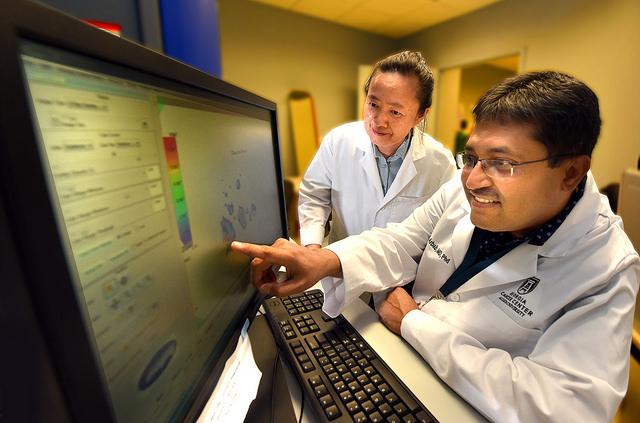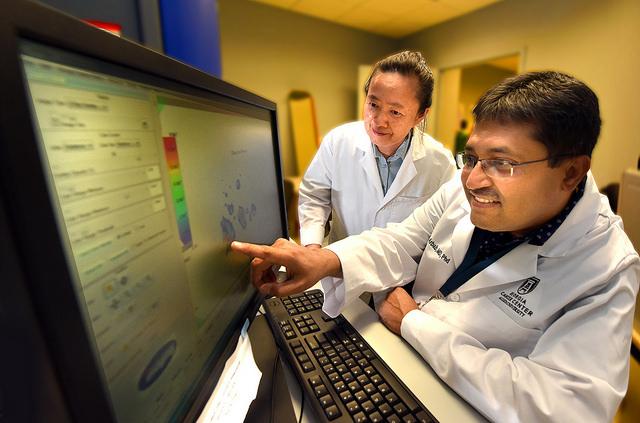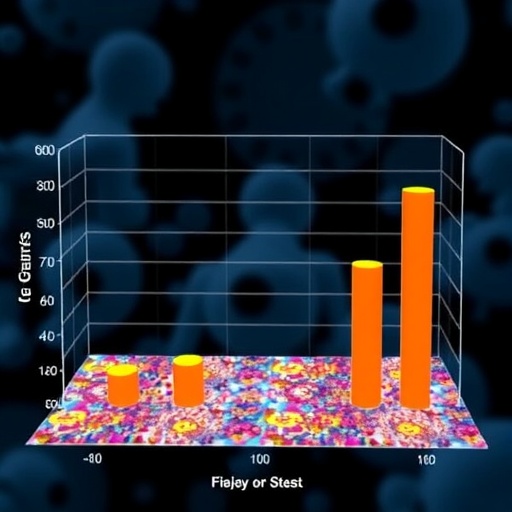
Credit: Phil Jones
AUGUSTA, Ga. (June 19, 2017) – While it's widely held that tumors can produce blood vessels to support their growth, scientists now have evidence that cells key to blood vessel formation can also produce tumors and enable their spread.
"Today we actually propose that blood vessels can form tumors and then the whole picture becomes a cycle," said Dr. Lan Ko, cancer biologist in the Department of Pathology at the Medical College of Georgia at Augusta University.
Ko is corresponding author of the study in the journal Oncotarget that provides some of the first evidence of the vicious cycle that appears to support cancer but also provides a potential new target for interference.
Dr. Ali S. Arbab, a tumor angiogenesis expert at the Georgia Cancer Center and the MCG Department of Biochemistry and Molecular Biology, was a major collaborator.
Pericytes are strong contractile cells that form the initial outer layer that gives shape and strength to a developing blood vessel. They also are stem-cell like in that they can make many different kinds of tissue. GT198 is a gene normally expressed in low levels in our bodies and known for its natural ability to repair DNA and regulate stem cells, but can become an oncogene when mutated.
Scientists have now found abnormally high levels of GT198 in the pericytes of the vascular network supporting a wide variety of human tumors. When activated, GT198 was also oddly located in the pericytes' cytoplasm rather than the nucleus.
They documented these high GT198-expressing pericytes in 14 different human cancers, including brain, lung, kidney, thyroid, prostate and bladder cancers. They documented their presence as well in six different animal models of a variety of cancers.
They also noted an additional and dangerous role for these malignant pericytes.
In human oral cancer, for example, they found malignant pericytes were abnormally thick and abundant in the blood vessel walls. Pericytes also proliferated into tumor cells and even detached from blood vessels apparently to enable the cancer's spread, the scientists report.
"Blood vessels can actually make tumors," Ko said. "This is a bit of a new idea that does not negate the fact that tumors also make blood vessels. But we believe instead provides the other half of the story."
Even in advanced tumors, the pericytes continued to make tumor cells. In this scenario, the highest level of GT198 expression was associated with decreased patient survival in the 40 patients whose tissues and clinical outcomes they examined. By contrast, GT198 expression was essentially nonexistent in normal oral cavity tissue that did not have this abnormal proliferation of blood vessels.
In an animal model of the aggressive brain tumor glioblastoma, they saw malignant pericytes from human tumors wrap around endothelial cells, as they would to form blood vessels, but they also formed tumors.
Malignant pericytes made a huge number of blood vessels as they captured the normal endothelial cells, and then prompted the endothelial cells to keep growing as well. Some of the small vessels or capillaries became larger tumor-lined blood vessels and then tumors. The scientists noted the passageway, or lumen, of the former blood vessels were still visible in some tumors. In a normal scenario, pericytes actually help control growth, Ko noted.
When they gave what was essentially a vaccine against GT198, it delayed tumor growth and prolonged mouse survival.
Together the new findings point toward GT198 as an efficient and effective cancer treatment target, said Ko. She is looking further at existing cancer drugs, which she has found directly target GT198, and exploring natural new ones.
Production of new blood vessels normally occurs during development and to help repair injuries. Cancer hijacks this normal biological response to support its growth. Normally, the endothelial cells that line blood vessels are laid down, then contractile pericytes arrive to encompass the endothelial cells to stabilize them and form the exterior layer of blood vessels. Over time, pericytes develop into even sturdier smooth muscle cells.
Ko and her colleagues reported last year that the gene GT198, which normally actually reduces cancer risk by repairing damaged DNA, appears to cause breast cancer when mutated in the pericytes that make breast tissue.
###
The new studies were supported by a Georgia Cancer Coalition Distinguished Cancer Scholar Award, the National Institutes of Health and the Susan G. Komen Foundation.
Media Contact
Toni Baker
[email protected]
706-721-4421
@MCG_AUG
http://www.augusta.edu/mcg/
############
Story Source: Materials provided by Scienmag





